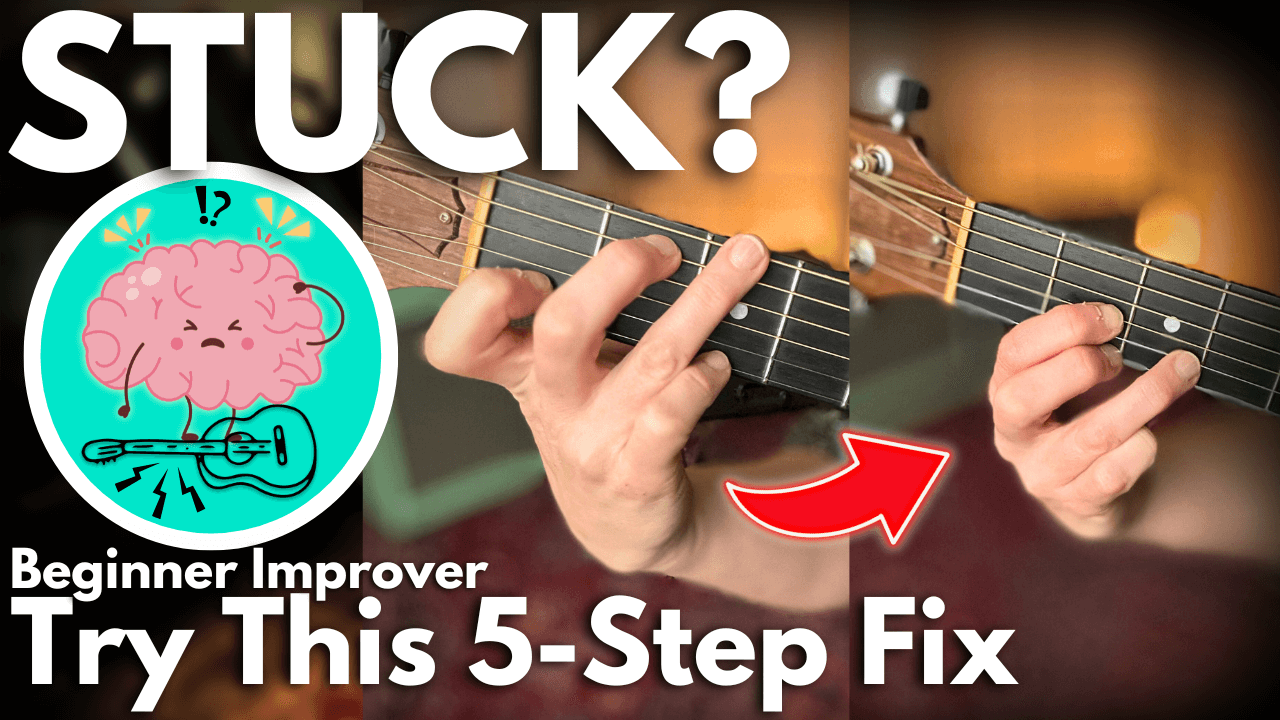Struggling to move smoothly between chords — even though you’ve practiced them dozens of times?
You’re not alone. Many adult learners hit a wall at this stage of guitar playing. The chords are familiar, but when you put them into a sequence, things start to fall apart.
If your transitions feel clunky, slow, or panicked, this post is for you. Below are five reasons your chord changes may be holding you back, and how to fix each one with focused, realistic practice.
1. You’re Not Recalling Chord Shapes Quickly Enough
Chord changes aren’t just about finger placement — they’re about recall speed. If your fingers hesitate when a chord is coming up, that moment of delay adds tension, breaks rhythm, and throws off your timing.
What to do:
-
Choose a chord sequence you’re working on (e.g., D – A minor – G).
-
Practice landing each individual chord cleanly. Don’t strum — just form the shape and check your finger placement.
-
Say the chord name aloud as you form it. Repetition builds mental and physical memory.
Tip: Many players benefit from visualising chord shapes. For example:
-
D looks like a triangle
-
A minor is stacked vertically
-
C is a diagonal
Find mental shortcuts that help you commit the shapes to memory.
2. You’re Still Using a “One-Finger-at-a-Time” Approach
It’s common to start by placing fingers one at a time — index, then middle, then ring — but as you progress, this method creates unnecessary delays.
The solution:
-
Practice landing all fingers simultaneously on the fretboard.
-
Focus on one chord at a time, dropping your hand into position as a single motion.
-
Repeat slowly, aiming for clean tone and proper pressure.
This change alone can significantly improve your transition speed and confidence.
3. You’re Not Thinking Ahead to the Next Chord
Many learners only focus on the chord they’re currently playing. But fluent playing requires you to always be mentally one step ahead.
How to improve:
-
Memorise your chord sequences so you can anticipate changes without looking at charts.
-
Break longer sequences into 3- or 4-chord chunks and practise each block independently.
-
Choose a simple song with a repetitive structure and commit the progression to memory.
For example, “Wicked Game” by Chris Isaak uses just three chords repeatedly: B minor – A – E. Start simple and build from there.
4. Certain Chord Transitions Are Slowing You Down
Not all chord pairs are equal. Transitions like A minor to G, or C to F, require more hand movement and can throw off your rhythm.
Try this targeted exercise:
-
Isolate the problem pair. Practise moving back and forth between just those two chords (e.g., A minor → G → A minor).
-
Focus on accuracy first, then increase speed gradually.
-
Once the pair becomes smoother, plug it back into the full sequence.
Fixing the hardest transition often unlocks the entire chord progression.
5. You Lose Control When You Try to Speed Up
Even when transitions feel comfortable at a slow pace, speeding up often causes everything to fall apart. That’s natural — but it’s also fixable.
How to build controlled speed:
-
Use a metronome. Start at a tempo where you can play the sequence cleanly and in time.
-
Gradually increase the BPM (beats per minute) in small increments.
-
If you’re working on a specific song, play along with the original track once you’re close to tempo.
Playing along with an external rhythm source helps develop timing and consistency, and removes the temptation to drift into a comfortable — but too slow — pace.
Final Thoughts
Messy chord changes are rarely about a lack of talent — they’re usually a sign that your practice needs more structure. The key is to isolate specific challenges and address them one at a time.
Progress often comes in waves: Some days you’ll move quickly, other times it’ll feel like nothing clicks. Both are normal. Give your hands time to adapt, and your playing will improve more than you expect.
Or subscribe to receive practical guitar tips tailored for adult learners straight to your inbox: NEWSLETTER
➡️ WATCH VIDEO LESSON –


0 Comments